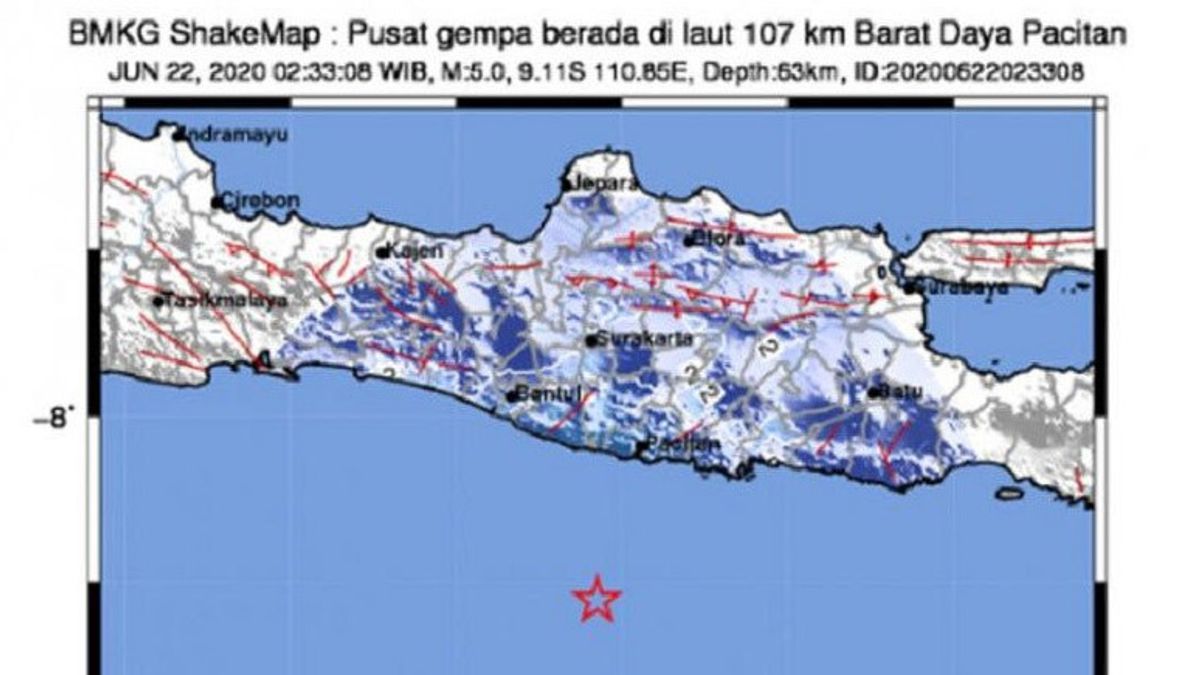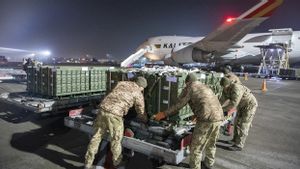JAKARTA - The Pacitan area of East Java Province is an earthquake and tsunami-prone area. So that people need to understand the concept of self-evaluation to survive the threat of the disaster.
"As a mitigation effort, there are many efforts that can be done to prevent victims during a tsunami. People need to understand the concept of self-evacuation because it is a safety guarantee that has been proven effective", said the Coordinator of Earthquake and Tsunami Mitigation of the Meteorology, Climatology, and Geophysics Agency (BMKG), Daryono, in Jakarta, reported by Antara, Tuesday, September 14.
He gave examples such as self-evacuation through the local wisdom of "Smong" on Simeulue Island, Aceh Province, which has been proven to be effective in saving people on the island for hundreds of years.
Because when a strong earthquake occurs, coastal communities must immediately move away from the coast. To support the effectiveness of the evacuation process, evacuation routes must be prepared, evacuation signs permanently installed.
"With the completeness of these facilities, people who are evacuating will immediately reach a gathering point at a temporary evacuation site in a safe area", he said.
In addition, the public should also not ignore the tsunami early warning that was disseminated by the BMKG using multimodal dissemination. The community must have an attitude of being aware of earthquake information and tsunami early warnings and have a quick response to immediately evacuate because the golden time is quite short.
In addition, local governments must also be alert and quick in responding to tsunami early warnings to further activate sirens for evacuation orders for coastal communities to immediately move away from the coast in the event of an earthquake with the potential for a tsunami.
Furthermore, he explained that if for some reason some residents were late in noticing the tsunami warning, it was important for the community to understand how to survive by carrying out vertical evacuations as soon as possible, even if they had to climb trees, climb tall buildings (towers) or climb other tall buildings nearby.
"These are some ways to survive the tsunami", said Daryono.
Historical records show that on January 4, 1840, the Java Earthquake occurred which triggered a tsunami in Pacitan, then on October 20, 1859, another large earthquake occurred on the island of Java which also caused a tsunami to hit Pacitan Bay, killing several crew members.
SEE ALSO:
The great Java earthquake again occurred on September 11, 1921, with a magnitude of 7.6. Furthermore, Pacitan was again rocked by a large earthquake on September 27, 1937. The impact of this earthquake reached an intensity scale of VIII-IX MMI causing 2,200 houses to collapse and many people died.
As an area facing the megathrust earthquake source zone, the Pacitan area is an earthquake and tsunami-prone area. The results of BMKG monitoring of seismic activity since 2008 show that in the southern region of Pacitan there have been several active seismicity clusters formed, although the earthquake center cluster that was formed did not end with a large earthquake.
The southern region of Pacitan is part of the earthquake active zone in East Java which is experiencing increased seismic activity. In the last few years, this area has often experienced significant earthquake activity which the community feels shakes.
Based on the results of the study, the southern area of East Java has a potential maximum magnitude of 8.7 megathrust earthquake. The BMKG study team used this targeted earthquake magnitude value as tsunami modeling data for the Pacitan area.
The English, Chinese, Japanese, Arabic, and French versions are automatically generated by the AI. So there may still be inaccuracies in translating, please always see Indonesian as our main language. (system supported by DigitalSiber.id)

















